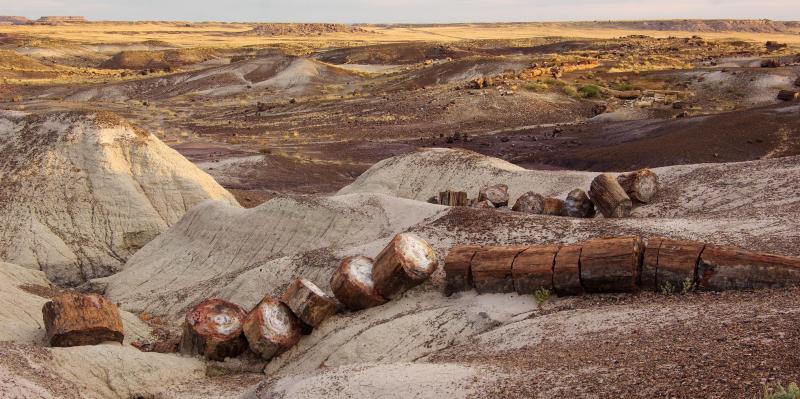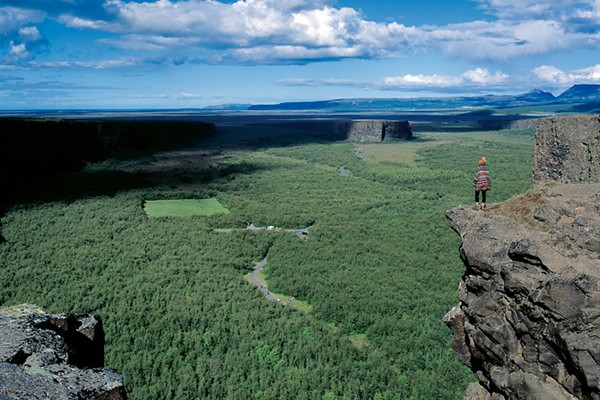Wednesday 27 August 2014
Date idea 27/8/2014 - Petrified Forest
I've spent some time teaching at the Fossilised Forest on the shore platform at Inverloch, Victoria. It's quite a sight to see huge tree trunks that have been knocked over in a flooding event and preserved with the mud still clinging to the rocks. I've recently found out about an even more impressive fossilized trees - The Arizona Petrified Forest (http://www.nps.gov/pefo/index.htm). Not only does this place have a forest of preserved trees, it also has some amazing fossils too.
Wednesday 20 August 2014
Date Idea 20/8/2014 - Icelandic volcanos
I've probably posted about Iceland already, but all geologists should visit this country - where else can you stand on a divergent plate boundary AND the results of a mantle plume? I recently got linked this update about recent activity and the possibility of another large volcano.
Wednesday 13 August 2014
Date Idea 13/8/14 - Meteorites
Having read a post on geology.com regarding starting a meteorite collect, I've deiced that hunting meteorites might make and enjoyable date activity. Not only can this be done anywhere (some places are better than others), there are also many different types to collect!
A couple of the researchers at Monash University go out to the Nullibore to hunt meteorites. This location has some distinct advantages. Due to the limited erosion and weathering, meteorites are preserved in-situ for a long long time. This increases the chances of finding them. Other locations that would be productive are known strewnfields. Areas where meteorite fragments have already been found where more might be discovered. Recently, 10th July 2014, a meteorite was seen from Melbourne and Sydney (as reported in The Age newspaper). It was recorded by a number of people. A meteorite this recent would be amazing to find.
Wednesday 6 August 2014
Date Ideas: Victoria Falls - 6/8/2014
Victoria Falls - A basalt plateau over which plunges a terrific volume of
water eroding sandstone gorges downstream. This is the wides waterfall
on the planet.
Uploaded to Wikimedia by - Vberger
Photo by: the ISS Expedition 7 crew - The Gateway to Astronaut Photography of Earth
Friday 1 August 2014
Historical places I've been: Eldee Creek structure
Eldee Creek Station is about an hour and a bit northwest of Broken Hill. Each year in winter, Monash University takes it's 3rd year field geology class up there for a two-three week mapping course. I've participated once and have taught it twice. Ever time I go, I make a new map of the structure, and each time it's different. The images above and below were taken from Robert Weinburg's Eldee Project page on the Monash University website.
The
core of the Eldee structure is pegmatite which is enclosed by pelitic
gneiss, meta-sediments and felsic gneiss with the occasional amphibolite
pod to make things interesting. There are beautiful folds, some nice clear faults and goats a plenty in this field area. I quite enjoy quietly tramping across the hills listening to the skitter of pelite shingles as they skid away from me.
This is a map from 2010 I made of the northern part of the structure while supervising small groups of students. As a result I take no structural measurements and often walk the same patch three or four times while having to skip other areas. The area is a lot more complicated than shown here and later maps that I've made show complicated F2 folds in the eastern half instead of those large pegmatite blobs. As you can see, the pegmatite gives the main radiometric response.
Subscribe to:
Posts (Atom)








 Yellow - Amphibolite, , Green - Biotite Gneiss, Blue - Muscovite Schist, Pink - Felsic Gneiss, Red - Pegmatite.
Yellow - Amphibolite, , Green - Biotite Gneiss, Blue - Muscovite Schist, Pink - Felsic Gneiss, Red - Pegmatite.